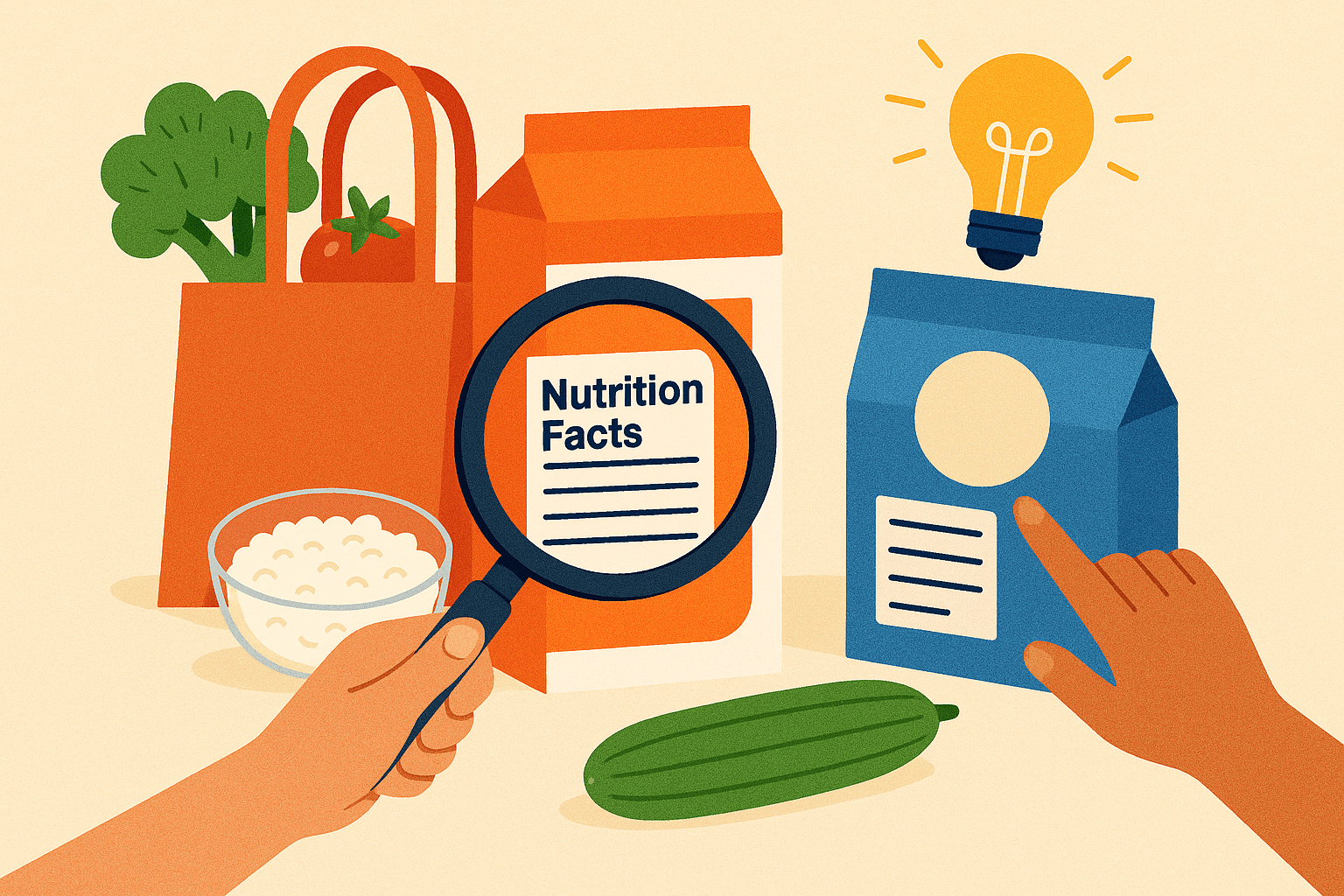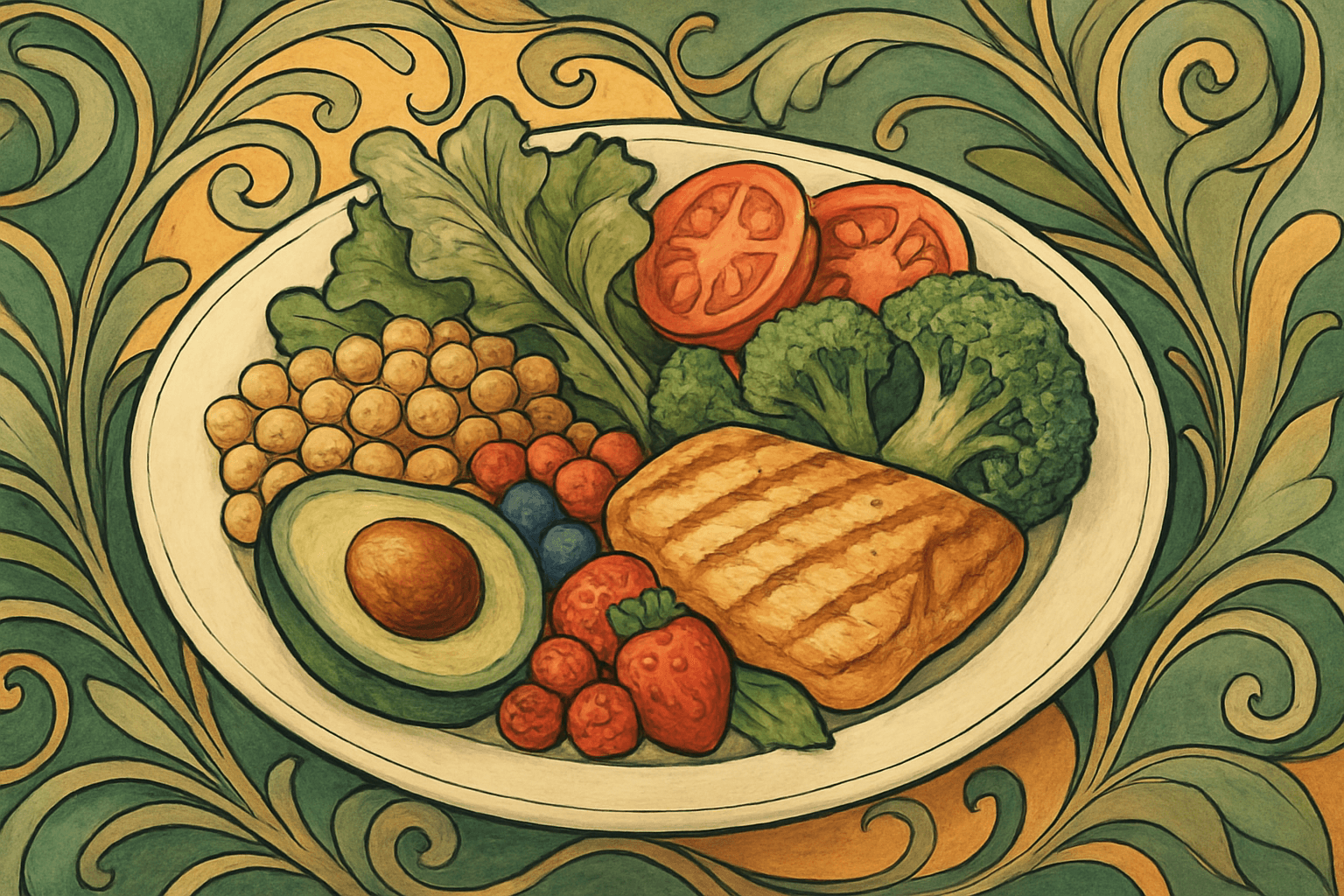Decoding Food Labels: The Ultimate Guide to Smarter, Healthier Grocery Shopping
Published on June 12, 2025

You’re flipping over a box of “whole grain” crackers and wondering if it’s actually healthy. The front screams “natural,” but the back reads like a science experiment. This guide breaks it all down so you’ll never be fooled again.
Step 1: Don’t Trust the Front of the Package
Marketing terms to question:
“Made with whole grains” (how much?)
“Reduced fat” (may mean more sugar or salt)
“No added sugar” (can still include fruit concentrates or natural sugars)
“Gluten-free” (not always healthier — may be ultra-processed)
Watch for buzzwords like:
“Superfood”
“Keto”
“Paleo”
These are unregulated and can hide poor quality ingredients.
Also beware of “health halo” design: green colors, rustic fonts, or fruit images that suggest health benefits where none exist.
Step 2: Master the Nutrition Facts Panel
Serving Size
Check if the serving size is realistic. A small-looking package can have 2–3 servings.
Calories
Don’t just look at total calories — ask where they come from. Calories from fiber and protein are more satiating than from sugar.
Macronutrients
Fat: Choose unsaturated over saturated. Avoid trans fats.
Carbs: Focus on added sugars, not total carbs.
Fiber: Aim for 3g+ per serving in breads and cereals.
Protein: Essential for fullness and muscle repair.
Micronutrients
Seek: Calcium, iron, potassium, vitamin D
Ignore: Vitamin A and C on processed snacks
Look out for: Choline and magnesium on newer labels
If you have sensitivities, also check sugar alcohols and cholesterol.
Step 3: Read the Ingredient List Like a Pro
Ingredients appear in descending order by weight. The first 3 tell you most of what you need to know.
Tips:
Shorter = better
Familiar = real food
Sugar in top 3 = it’s a dessert
Avoid:
High-fructose corn syrup
Cane juice, dextrose, maltose, agave
Fruit juice concentrates
Carrageenan, artificial dyes (Red 40, Yellow 5)
Sodium nitrate/nitrite
“Natural flavors” (vague)
If you wouldn’t cook with it at home, think twice.
Step 4: Understand % Daily Value (%DV)
General rule:
5% or less = low
20% or more = high
Good to be high in:
Fiber
Calcium
Potassium
Iron
Keep low:
Added sugars
Saturated fat
Sodium
Use %DV to balance meals across your day.
Step 5: Compare Products Wisely
When choosing between two similar items, compare:
Serving size
Added sugar
Fiber
Protein
Ingredients: whole vs. refined grains, oils, etc.
Example:
Bar A — 10g added sugar, 1g fiber
Bar B — 3g added sugar, 4g fiber
Go with Bar B.
Advanced tip: Buy plain yogurt over flavored. Add your own fruit to control sugar.
Step 6: Spot Portion Creep and Gimmicks
Big bag ≠ one serving.
Tips:
Use a measuring cup or scale
Never eat straight from the bag
“100-calorie packs” are usually ultra-processed
Restaurant portions = 2–3x serving size
Split or take leftovers home
Eat mindfully: plate your food, chew slowly, sit down.
Bonus: Look for Meaningful Certifications
Not all logos are marketing fluff. These carry real standards:
USDA Organic — no synthetic pesticides or GMOs
Non-GMO Verified
Certified Humane / Animal Welfare Approved
Whole Grain Stamp
Fair Trade Certified
Rainforest Alliance
Heart-Check (AHA)
They’re not guarantees, but they raise transparency.
Final Thoughts
Grocery aisles are full of deceptive packaging — but food labels give you power. You don’t need to obsess. Just take a few minutes per item and build awareness.
And remember: the healthiest foods usually don’t need a label at all — whole vegetables, fruits, grains, fish, and legumes.
Know what’s in your food. Eat real. Eat smart.








